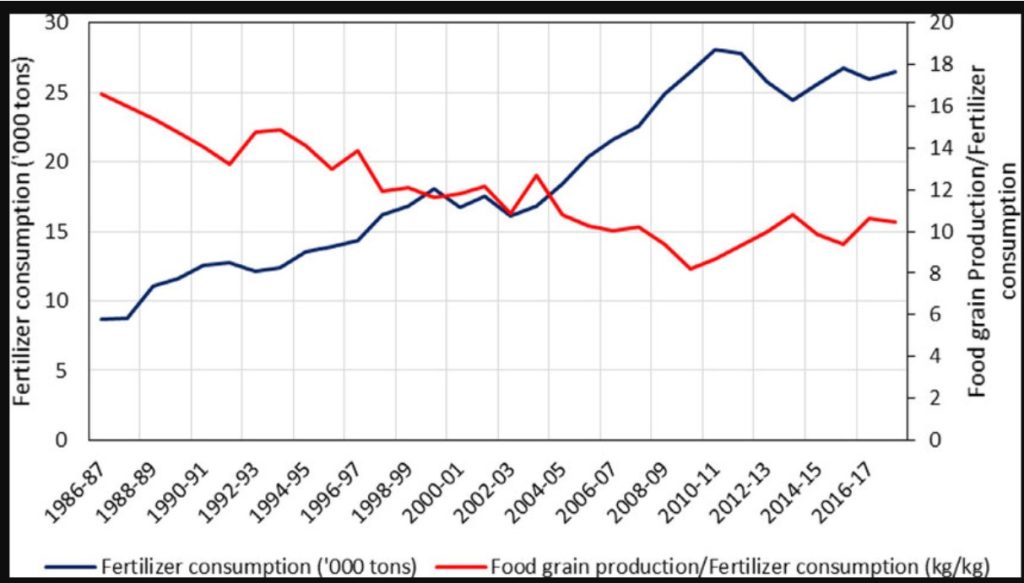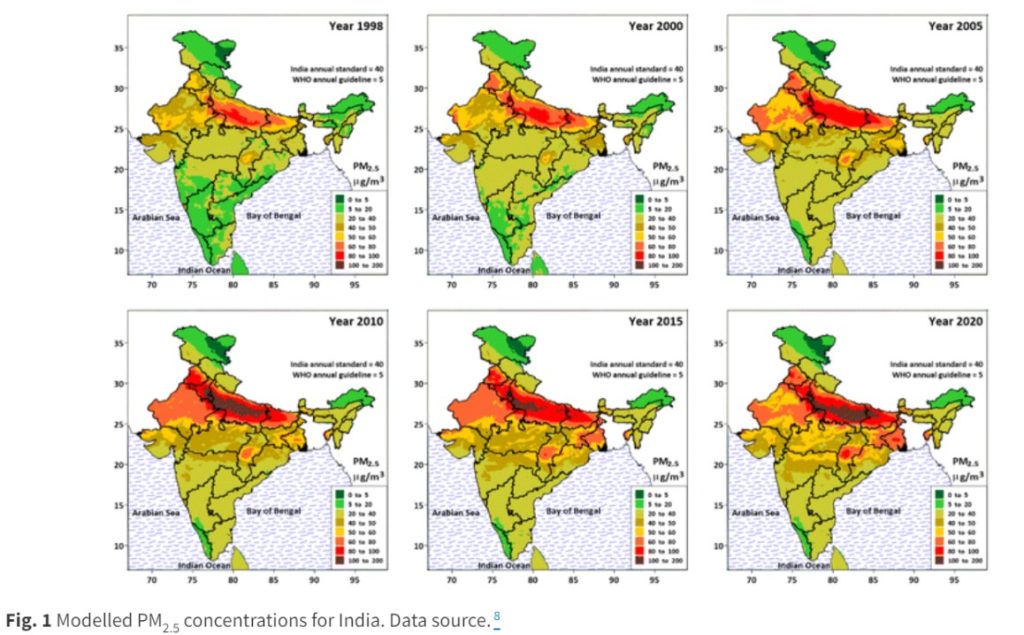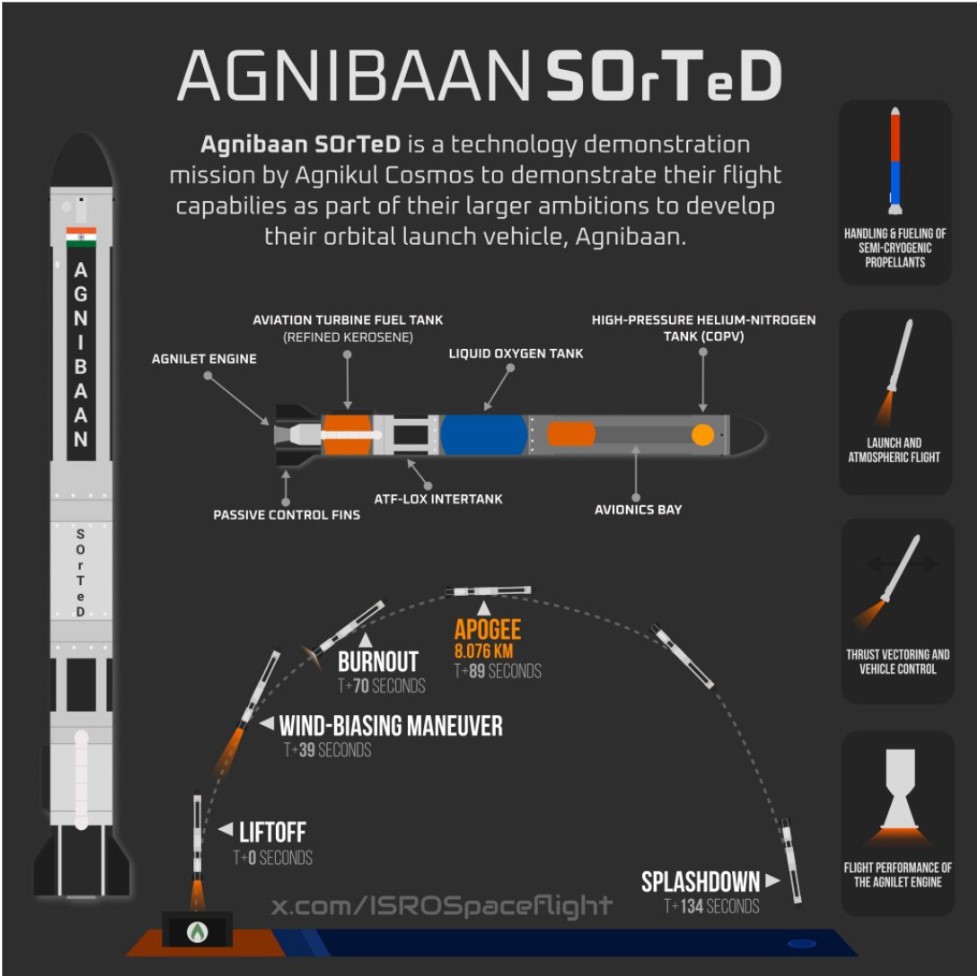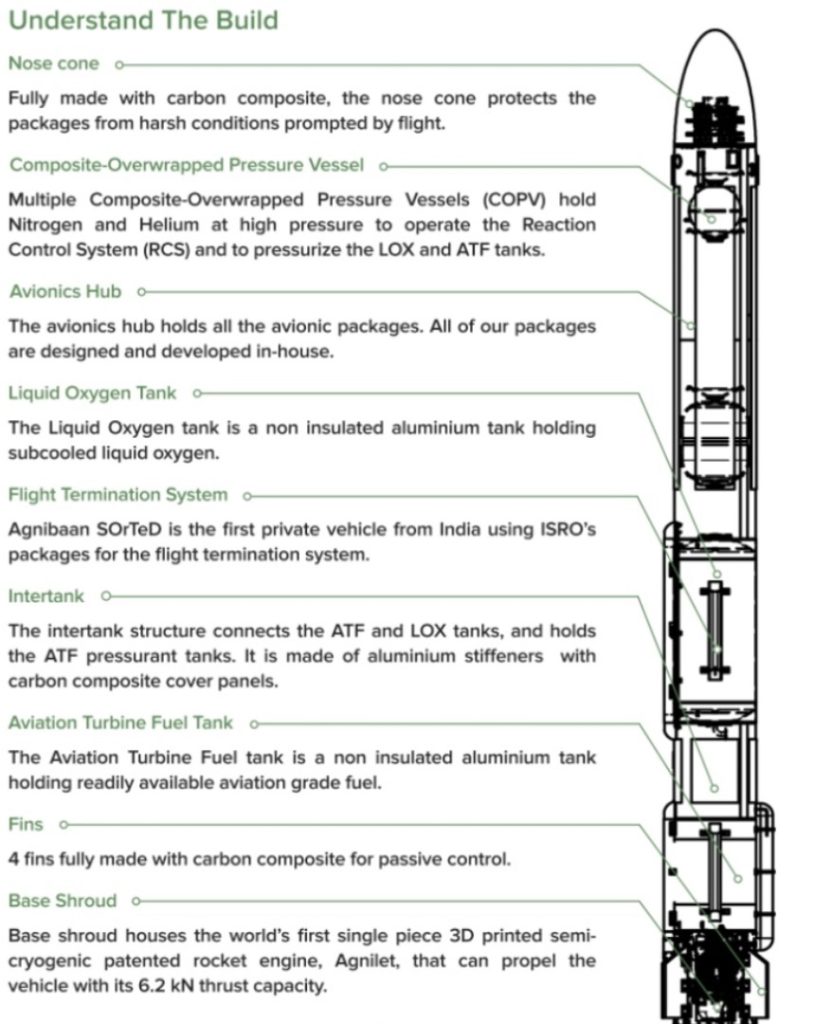CONTENTS
- Recycle Nutrients to Mitigate Fertiliser Crisis
- Testing the ‘Agnibaan’ under the ‘Suborbital Tech Demonstrator’ (SOrTeD) Mission
Recycle Nutrients to Mitigate Fertiliser Crisis
Context:
Contrary to the popular thinking that stresses that carbon is problematic, other essential elements crucial for sustaining life on Earth are also breaching the boundaries of sustainability due to the disruption of their natural ‘biogeochemical’ cycles by human activities.
Relevance:
GS3-
- Environmental Pollution and Degradation
- Environmental Impact Assessment
- Cropping Patterns
- Irrigation
- E-Technology in the Aid of Farmers
- Direct & Indirect Farm Subsidies
Mains Question:
Globally, there is a growing focus on preventing nutrient wastage and promoting recycling. In this context, discuss the significance of nutrient recycling and the strategies that can promote it. (15 Marks, 250 Words).
Legume-Based Crop Rotations:
- For about ten thousand years before the ‘green’ revolution, farmers managed to grow crops without fertilizers by employing legume-based crop rotations and livestock farming.
- Legume crops and certain soil microbes fixed atmospheric nitrogen, while livestock manure and urine enriched the soil with nutrients such as nitrogen (N), phosphorus (P), potassium (K), sulfur (S), carbon (C), and various micronutrients.
- However, modern farming in India has moved away from legume-based crop rotations, relying heavily on NPK fertilizers instead of manures, costing the Indian government over Rs. 2 lakh crores annually in subsidies.

- As livestock farming shifted away from crops and intensified into peri-urban dairies, manure and urine predominantly ended up contaminating our ground and surface water bodies.
- The release of untreated dairy, domestic, and other wastes has turned the Sahibi River in New Delhi into a wastewater drain (Nazafgarh drain), which, along with the Shahdara drain, heavily pollutes the Yamuna River and releases harmful gases into the air.
Nutrient Cycles and Nutrient Pollution:
- The nutrient cycles have thus turned into cascades causing nutrient pollution. The positive news is that some pollutants are actually nutrients in the wrong place and can be reclaimed.
- Unfortunately, less than 30 percent of the nutrients supplied as fertilizers are harvested as crop yield, with the remainder contributing to increasing pollution.
- In water bodies, the buildup of these nutrients promotes unwanted algal growth, causing eutrophication and the death of fish and other valuable aquatic and marine species.
- This process devastates ecosystems and the livelihoods of those dependent on fishing, tourism, and other ecosystem services.
- In coastal areas, algal eutrophication progressively leads to green tides, brown tides, and eventually red tides, including the accumulation of toxic species.
- Reversing these trends could restore water economies and support the livelihoods of millions.
Pollution Caused by Nitrogenous Compounds:
- Nitrogenous compounds from fertilizers, manures, urine, and sewage also contribute to air pollution as ammonia or nitrous oxide.
- Ammonia significantly adds to particulate matter pollution (PM2.5 and PM5) by combining with NOx gases (nitrogen dioxide and nitric oxide) released from fuel or residue burning in power generation, transportation, industry, or waste disposal.
- In India, PM2.5 pollution alone accounts for over a million deaths annually, with some estimates attributing up to 7 percent of all deaths to PM2.5 exposure.
- India has the highest number of the world’s most polluted cities in terms of PM2.5, underscoring the need for drastic measures to control air pollution, particularly PM2.5.

- This effort requires not only reducing emissions from fuel burning but also restoring nutrient cycles in agriculture and waste management.
Recycling Livestock Manure:
- While a portion of livestock manure is recycled for crops in India, urine recycling is almost nonexistent.
- If we recycled all the 15 kg of manure produced daily by each of the 200 million cattle, its 5 percent NPK nutrient content would amount to 150,000 metric tons—surpassing the average daily fertilizer consumption of approximately 137,000 metric tons.
- Additionally, about 3 percent of nutrients are lost from the 15-20 liters of cattle urine per animal per day, totaling 120,000 metric tons.
- Technologies and best practices from Europe and elsewhere can maximize nutrient retention and recycling from manure and urine.
- It is known that at least half of the currently recommended fertilizer doses can be replaced with farmyard manure without reducing crop yields, saving a lakh crores and reducing the environmental footprint of fertilizers, manures, and agriculture.
- Furthermore, over 55,000 metric tons of nutrients, equivalent to 40 percent of India’s daily fertilizer consumption, are lost from the over 150 billion liters of wastewater produced daily due to the country’s low wastewater treatment capacity of about 27 percent. Most sewage treatment plants (STPs) are located in cities, and only a few are functional.
- Fortunately, metropolitan cities like Delhi and Hyderabad are rapidly expanding their STP capacity to achieve 100 percent wastewater treatment capability within a year or two, with other major cities following suit.
- However, their efficiency in nutrient removal varies, which needs immediate attention to ensure the purpose of treatment is fully realized and that treatment plants become resource plants by selling the recovered nutrients.
Global Initiatives:
- Globally, there is a growing focus on preventing nutrient wastage and promoting recycling.
- A significant initiative in this regard is Target 7 of the Kunming-Montreal Global Biodiversity Framework, adopted at the United Nations Convention on Biological Diversity’s 15th Conference of Parties in 2022.
- This target aims to “Reduce pollution risks and the negative impact of pollution from all sources by 2030, to levels that are not harmful to biodiversity and ecosystem functions and services, considering cumulative effects, including (a) by reducing excess nutrients lost to the environment by at least half, through more efficient nutrient cycling and use.”
- In Europe, where extensive recycling of livestock manure and urine is already practiced, the new focus is the RENURE (Recovery of Nitrogen from Manure) policy proposed by the European Commission in 2024.
- As these proposals are debated to ensure they contribute to sustainability goals, it is evident that nutrient recovery and recycling have garnered significant policy attention.
- Meanwhile, a Swedish fertilizer company, Ragn-Sells, has patented a process to recover nutrients from wastewater and convert them into industry-grade fertilizers, launching this initiative through their spin-off company easymining.se in Europe within a year.
Implementing Similar Plans in India:
- Implementing similar units in India, attached to STPs, could significantly reduce the economic and environmental costs of traditional fertilizer technologies and create green jobs.
- Implementing Similar Plans in India:
- In Delhi, the city produces approximately 3,330 Million Litres per Day (MLD) of wastewater, exceeding the capacity of its 38 operational STPs (CPCB, 2021).
- The Delhi Government aims to achieve 100 percent wastewater treatment by 2025 and increase the reuse of treated wastewater from 12.5 percent to 60 percent.
- The proposed plans include using 197 MGD, 112 MGD, and 10 MGD of treated sewage for drinking purposes, irrigation, and the rejuvenation of water bodies, respectively (CPCB, 2021).
- Studies were conducted on wastewater nutrients and their recovery/recycling potential in several STPs in the national capital, supported by the University’s memorandum of understanding with the Delhi Jal Board.
- These studies were funded by the UN Environment Programme (UNEP) under the Global Wastewater Initiative and the Global Partnership on Nutrient Management.
- The findings revealed that the current removal rates of phosphatic nutrients in various Delhi STPs range from 35-74 percent, and 14-93 percent for nitrogenous nutrients.
- The Akshardham STP, which performed at the higher end of these ranges, stood out, whereas most other STPs were closer to the lower end, indicating a significant potential for improving nutrient recovery.
Way Forward:
- A similar study is planned for Hyderabad, in collaboration with agricultural scientists who will also evaluate crop performance and estimate the reduction in commercial fertilizer usage through recycled nutrients from wastewater.
- These efforts will greatly enhance the quality of treated water for various uses and help alleviate the water crisis in India’s metropolitan cities.
- In Delhi, nutrient-depleted water is also crucial for accelerating the rejuvenation of water bodies, as the quality of treated water currently used is insufficient to revive the heavily eutrophicated water bodies.
- Regarding the recycling of nutrients from wastewater, large piles of nutrient-rich sludge accumulate in the backyards of every functional STP.
- These need to be developed and marketed as fertilizer alternatives by establishing necessary market linkages and supply chains.
- This process has begun to some extent in Hyderabad but needs significant scaling up to clear existing inventories.
- A key task is to find ways to pre-process the sludge to minimize the heavy metals, plastics, and other contaminants found alongside nutrients in Delhi’s sludge.
Conclusion:
Nationally, if we recover and recycle the 84 percent of nutrients lost in wastewater for agriculture, we could save up to forty percent of our national fertilizer consumption. Economically, these savings would equate to the entire R&D budget of the Government of India.
Testing the ‘Agnibaan’ under the ‘Suborbital Tech Demonstrator’ (SOrTeD) Mission
Context:
On May 30, the start-up Agnikul Cosmos successfully conducted the first test flight of its rocket ‘Agnibaan’ in a mission called ‘Suborbital Tech Demonstrator’ (SOrTeD). This was Agnikul’s fifth attempt after the first four were canceled due to suboptimal launch conditions.
Relevance:
GS3-
- Space Technology
- Indigenization of Technology
- Achievements of Indians in Science & Technology
Mains Question:
Private rocket fights herald prospects more valuable than commercial fortune. Discuss in the context of the first test flight of ‘Agnibaan’ under the ‘Suborbital Tech Demonstrator’ (SOrTeD) Mission. (10 Marks, 150 Words).
About Agnibaan:


- ‘Agnibaan’ is a two-stage, 14-tonne launch vehicle designed to carry small satellites to low-earth orbits.
- Both stages are powered by custom semi-cryogenic engines. The test flight featured a minimal version of the rocket with just one engine (or stage).
- Notably, many components of the vehicle, including the engines, are 3D-printed, and Agnikul has stated it can build one rocket per month.
- Agnilet Engine is a 3D-printed, 6 kilonewton (kN) semi-cryogenic engine that uses liquid oxygen and kerosene as propellants.
- Unlike traditional sounding rockets that launch from guide rails, Agnibaan SOrTeD takes off vertically and follows a predetermined trajectory, executing precisely orchestrated maneuvers during its flight.
- It can carry payloads up to 100 kg to an altitude of 700 km in five different configurations.
- Agnibaan SOrTeD represents the first step towards launching the world’s first 3D-printed rocket into space.
- 3D printing, also known as additive manufacturing, uses materials such as plastics and metals to convert designs from computer-aided design (CAD) software into real three-dimensional items.
- It contrasts with subtractive manufacturing, which involves cutting out or hollowing out a piece of metal or plastic using methods like milling.
- Traditionally used for prototyping, 3D printing has significant potential in producing artificial limbs, stents, dental crowns, automobile parts, consumer goods, and more.
Significance of the Development:
- With this test flight, Agnikul has taken its first steps towards developing ‘Agnibaan’ into a full-fledged launch vehicle, aiming to enhance India’s commercial launch services in response to the growing market for small satellites and their services.
- Currently, this market is dominated by the Polar Satellite Launch Vehicle (PSLV) and will soon include the Small Satellite Launch Vehicle, both developed by the Indian Space Research Organisation (ISRO).
- However, Agnikul needs to improve its communication regarding test flight parameters, an area where ISRO has also faced challenges. It is crucial for new space startups to avoid repeating these issues.
- The flights of ‘Agnibaan’ and Skyroot’s ‘Vikram‘ in 2022 promise benefits beyond commercial success.
- ISRO and its trained scientists have shared technical expertise and physical systems for many private missions, allowing these startups to test and innovate more quickly and cost-effectively.
- These startups are now poised to lead the way for ISRO and others, potentially accelerating innovation in the sector.
- For instance, ISRO has been developing its own semi-cryogenic engine, which could benefit from lessons learned at Agnikul.
- It’s crucial for the government to ensure that bureaucratic and legal frameworks support the free flow of knowledge.
- Additionally, in April, ISRO announced it had developed engine nozzles made from a carbon-carbon composite to replace the Columbium alloy nozzles on the PSLV’s fourth stage.
- This change increased the PSLV’s payload capacity by 15 kg—a significant enhancement for an already advanced launch vehicle.
Conclusion:
This progress was made possible by educational and research opportunities that allowed expertise from one sector to benefit another. This advantage is particularly evident in India’s space endeavors. As more innovation emerges, it is hoped that the resulting solutions and insights will benefit various fields, from aerospace to zoology.





